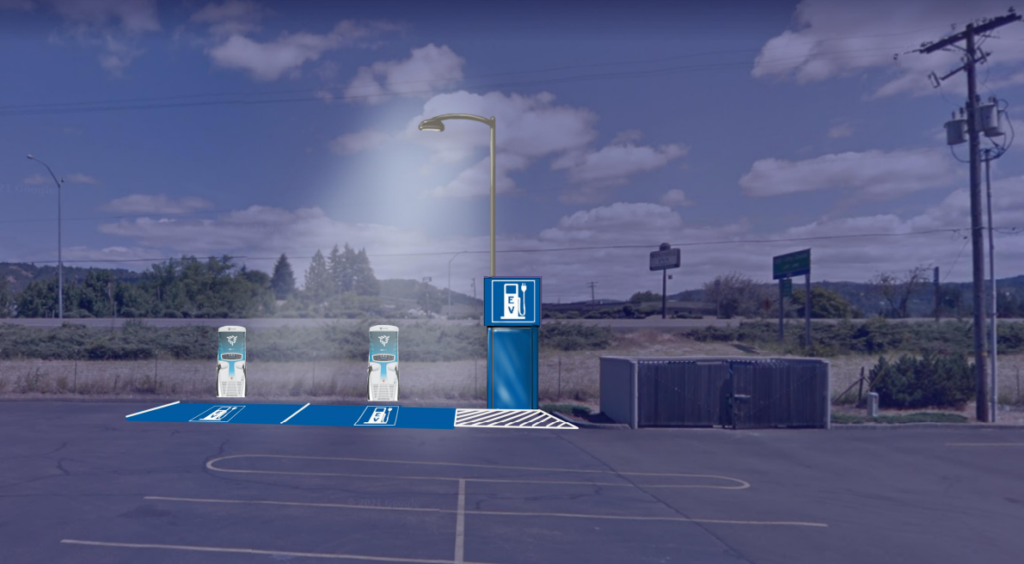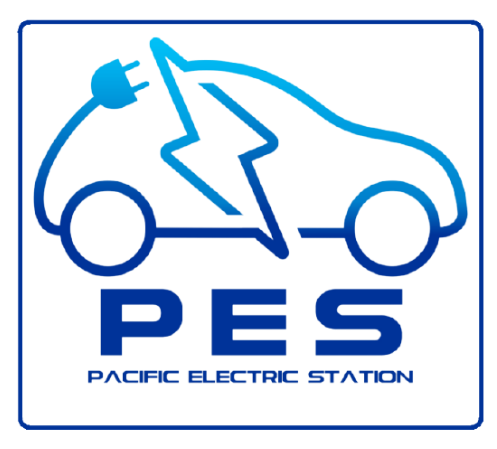Investment Opportunities
Concept for Pacific Electric
Station EV charging stations.
The goal of PES to bring DC Fast Charge electric charging stations to as many business locations as possible. The typical station will have 2-50 kW DC Fast charging stations and 2-optional level 2 charging stations.
These are not intended to compete with the “Superstations”, but to compliment them. These would be sited at businesses that would like to attract EV fast charge customers to spend the typical time at their business that it takes to charge a vehicle (1/2 – 1 hour). The advantages of the small stations are many, including:
1. Give EV owners more options for charging near a business of their choice.
2. Give entrepreneurs an opportunity to own a small business that requires no employees, inventory, or storefront. Accounting is completely automated.
3. Give existing property the chance to attract new customers to their businesses.
Advantages
- The small stations have less impact on the electric grid since the electric demand will be spread out through the area.
- Stations will be “cookie cutter” making repair parts available by the next day in most areas. All the electric components will be “Off the shelf” items. This means that all components will be readily available for installation and repairs as needed minimizing downtime.
- The “module” is a patent pending equipment shelter that incorporates all electrical equipment and is also a sign monument equipped with 4 sided LED signs and area lighting.
- The typical installation can be completed in 1 week because everything is locally stocked and all concrete is precast, elimination messy cast in place concrete.
- Because everything is precast. The equipment can easily be removed, and site restored to original condition
Site Requirements
- Site should be as close as possible to 480 V Power.
- Site should have high visibility
- Site should be at a business where people can spend 1 hour (Restaurants, shopping
centers, movie theaters, family entertainment centers, bowling alleys, etc.)
How the business model works

- In order to help attract customers the business owner provides 4 parking spaces. There is not any cost or other financial obligation to the property owner.
- The investor owns the equipment. The investor also keeps all tax credits (30% Federal (2001) & State), incentives, utility company rebates, grants, and other programs available in the area of installation. After the investor recovers his complete investment a negotiated split of the profits will be made between the investor and property owner.
- PES arranges for delivery of all material and installation, permits and applications.
- Costs. The installed cost of a 50 kW dispenser is about $100,000 not covering utility company fees. The power required is 480 volt 3 phase 120 kW. Example: Eugene Oregon utility EWEB is offering an incentive of $15,000 per dispenser. The existing Federal tax credit would be $30,000. The federal infrastructure bill’s final details are not available yet, but over 5 billion has been set aside for developing 500,000 new EV charging stations nationwide which averages $10,000 per station. Based on just those 3 incentives, the investor potentially recovers ½ the investment in the first year. Check with your accountant for the details in your area.
- Accounting. All accounting will be automated. Daily receipts will be batched and deposited into your account (by a 3rd party vendor) Payables (mainly the electric bill) can be set up for autopay if your utility participates in a program that will interface) once the investor recovers the investment, an independent accounting firm will distribute the profits on a monthly basis.
